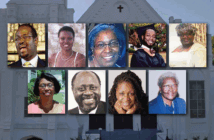A year ago, Encyclopaedia Britannica announced they would cease producing bound volumes. It was a watershed moment when you consider this standard reference was the first of its kind in the English language over 200 years ago.
God’s call to churches never can be captured for all time in any of our methods or practices. The new wine of God’s message keeps resisting the old wineskins in which we seek to capture it.
As with most “overnight” changes, the movement toward this decision had been on track for years. Many things about the research and printing had changed over the years, but that had not led to the disappearance of a published edition. As the time and expense required for the updates produced a source already somewhat out of date, the company knew they had to change in light of the expectations of people and the increasing dependence on electronic technology.
The publishers rightly honored their long history and reputation for rigor and accuracy. However, they could not ignore that their previous delivery system no longer worked. They had depended on a door-to-door sales force of more than 2,000 to sell a product that cost $1,000. The model worked until it stopped working. The high point for sales was 1990 when 100,000 sets of the bound volumes were sold. The numbers dropped swiftly. By 1996, only 3,002 sales were made, and the sales force was disbanded.
Efforts to use new technologies with their product began decades ago with modest successes but more failures. Then Wikipedia emerged offering less reliable information but covering a much broader range of topics and for no cost. Instead of seeing Wikipedia as a rival or their past failures as the end of their road, they learned from the past and others so that a new model emerged. Focused less on a product and more on learning, the new approach of Britannica Online built on their reputation in providing a range of learning resources for K-12 teachers and students. The company is growing even as it changes.“Our people have always kept the mission separate from the medium,” is why company president Jorge Cauz believes they have been able to handle challenge after challenge. He speaks of honoring a “deeply held sense of mission” even as the ways of carrying out that mission change regularly.
John Wesley knew that the “forms” of religion can remain even when the “power” of true religion is gone. The reason has nothing to do with our particular era or technology. It has to do with the human tendency to create the necessary means (“earthen vessels”) required to carry the power of God and then fall more in love with the earthen vessels than with the gospel message they carry. God’s call to churches never can be captured for all time in any of our methods or practices. The new wine of God’s message keeps resisting the old wineskins in which we seek to capture it. Church leaders who can embrace the essential truth that the medium is ever-changing, while holding fast to the mission, can lead the church into the next chapter God has for our congregations.
This article draws from a piece by Mr. Cauz in the March 2013 issue of Harvard Business Review.
Related Resources:
- Continuity and Change: Two Tunes All Leaders Must Know by Lovett H. Weems, Jr.
- Take the Next Step: Leading Lasting Change in the Church by Lovett H. Weems, Jr.






